Petrus Regout Maastricht large antique transferware dish with chinoiserie luster glaze decor 'Vesta'

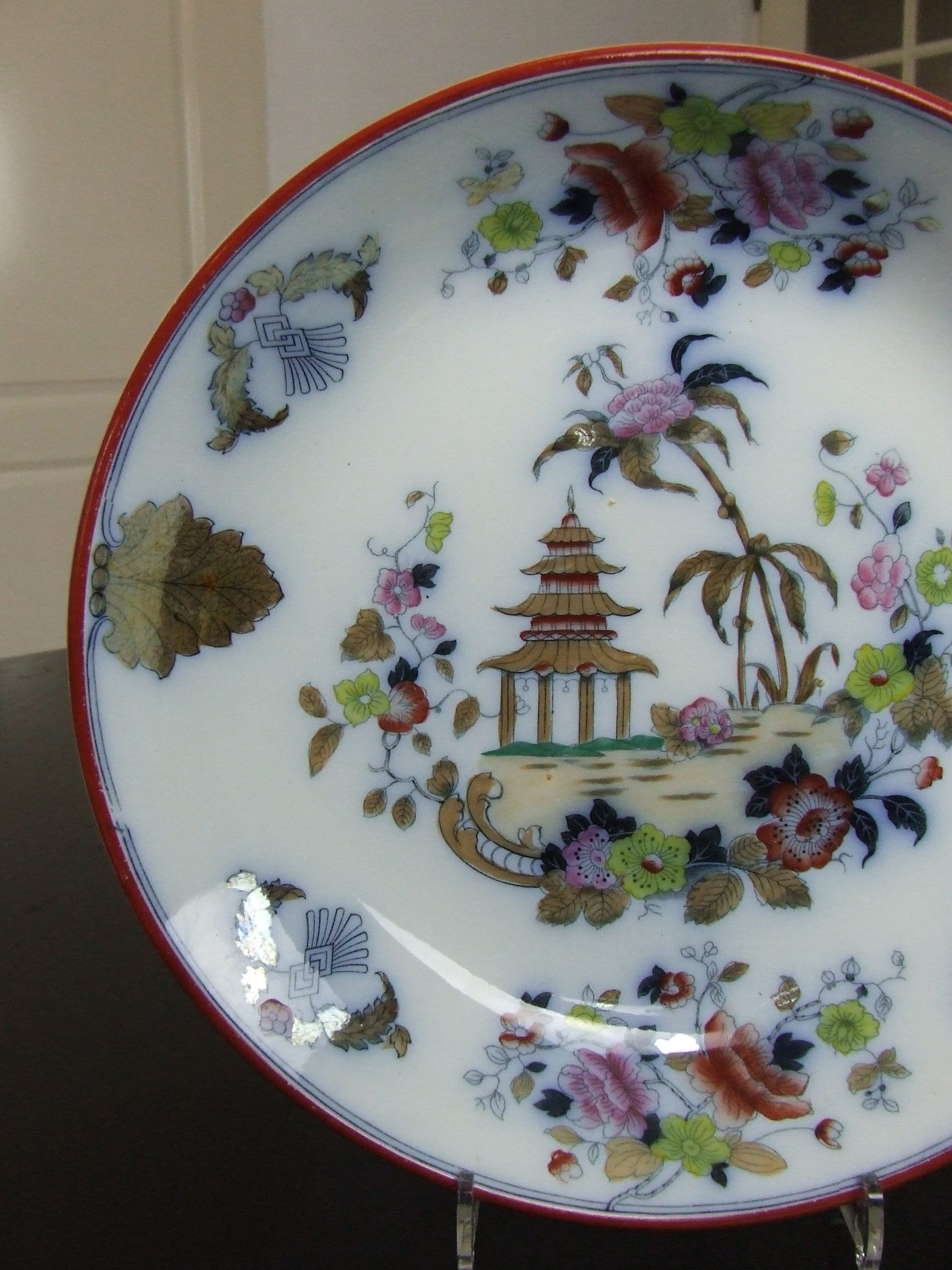

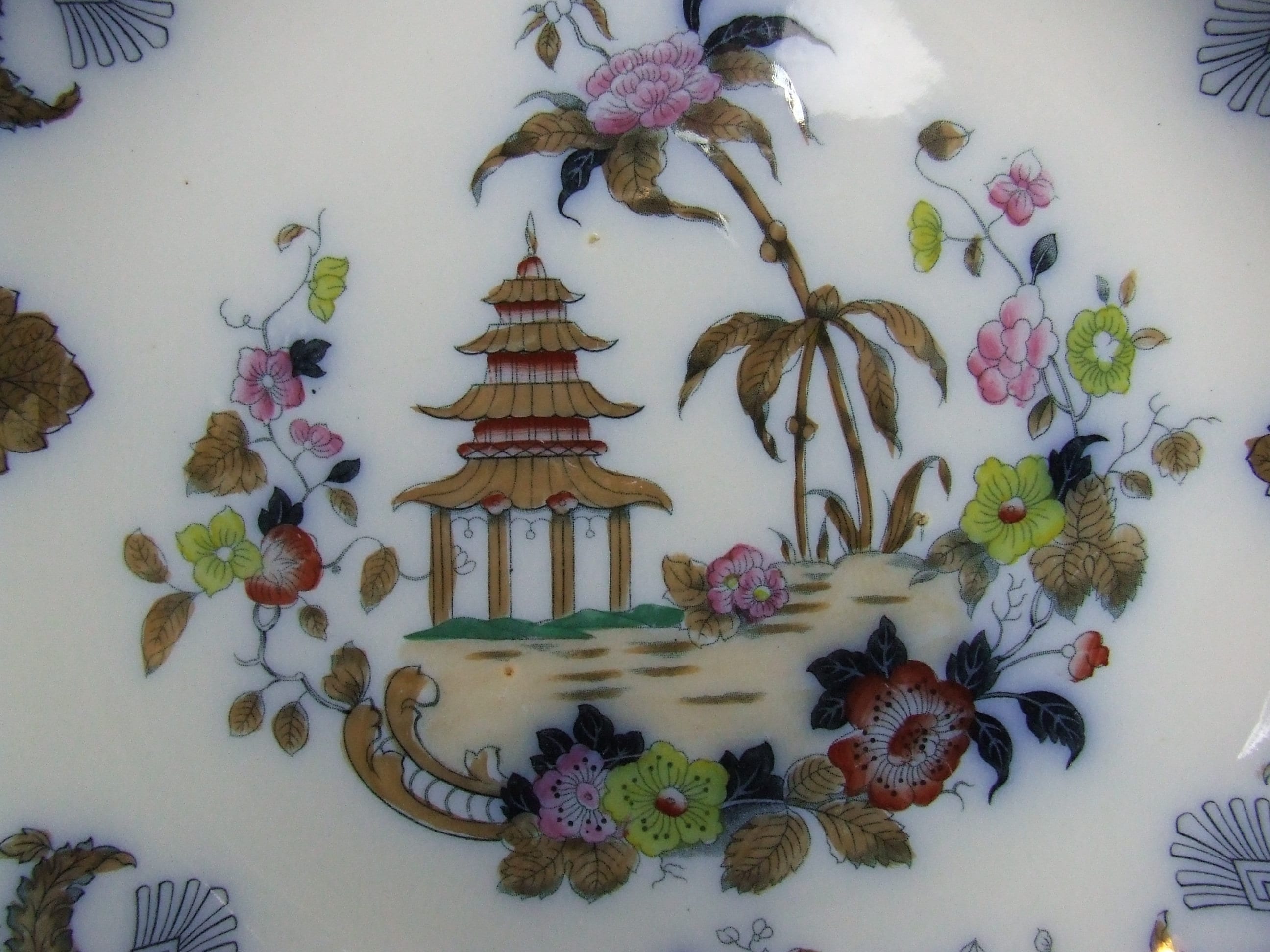
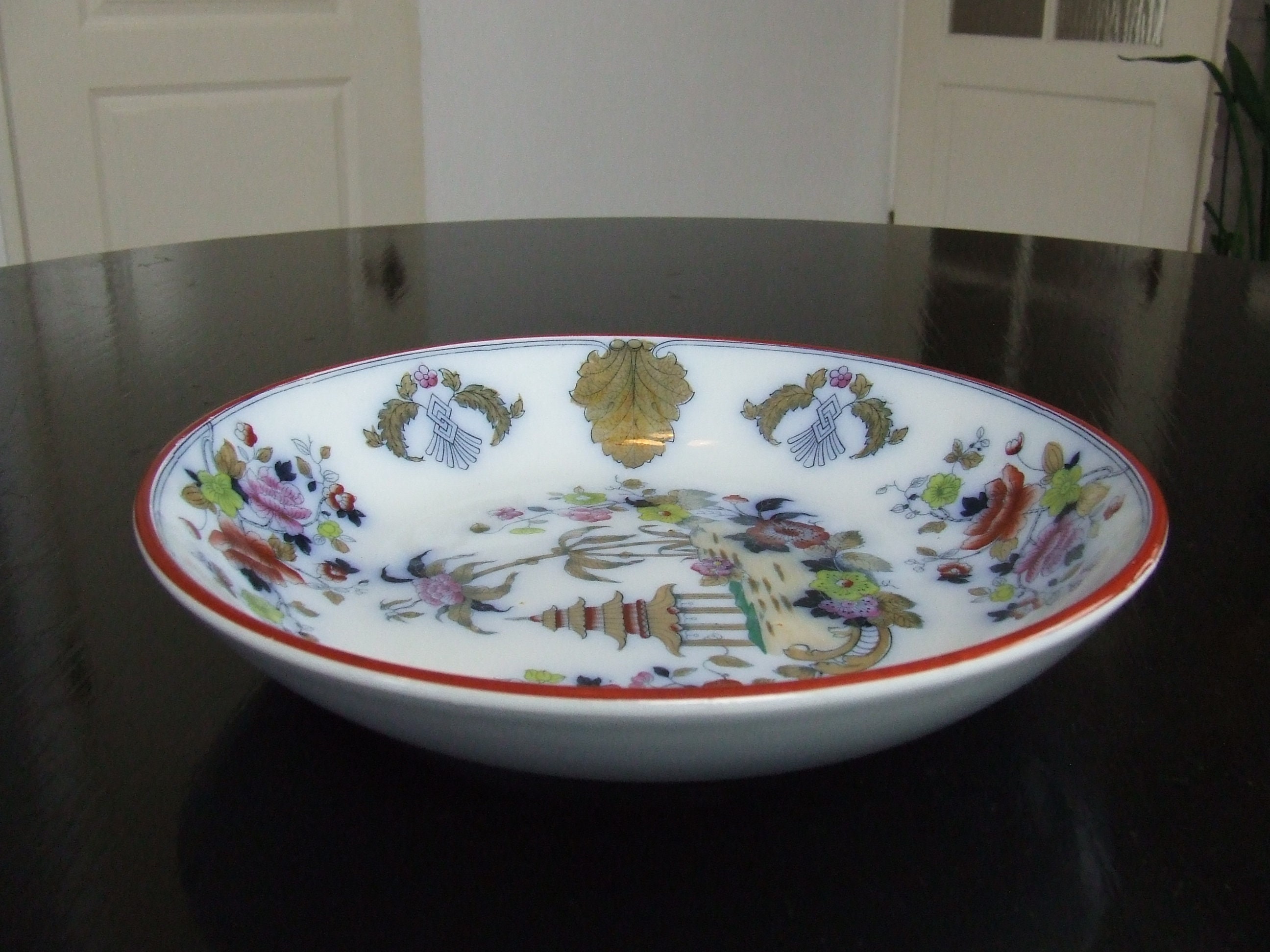
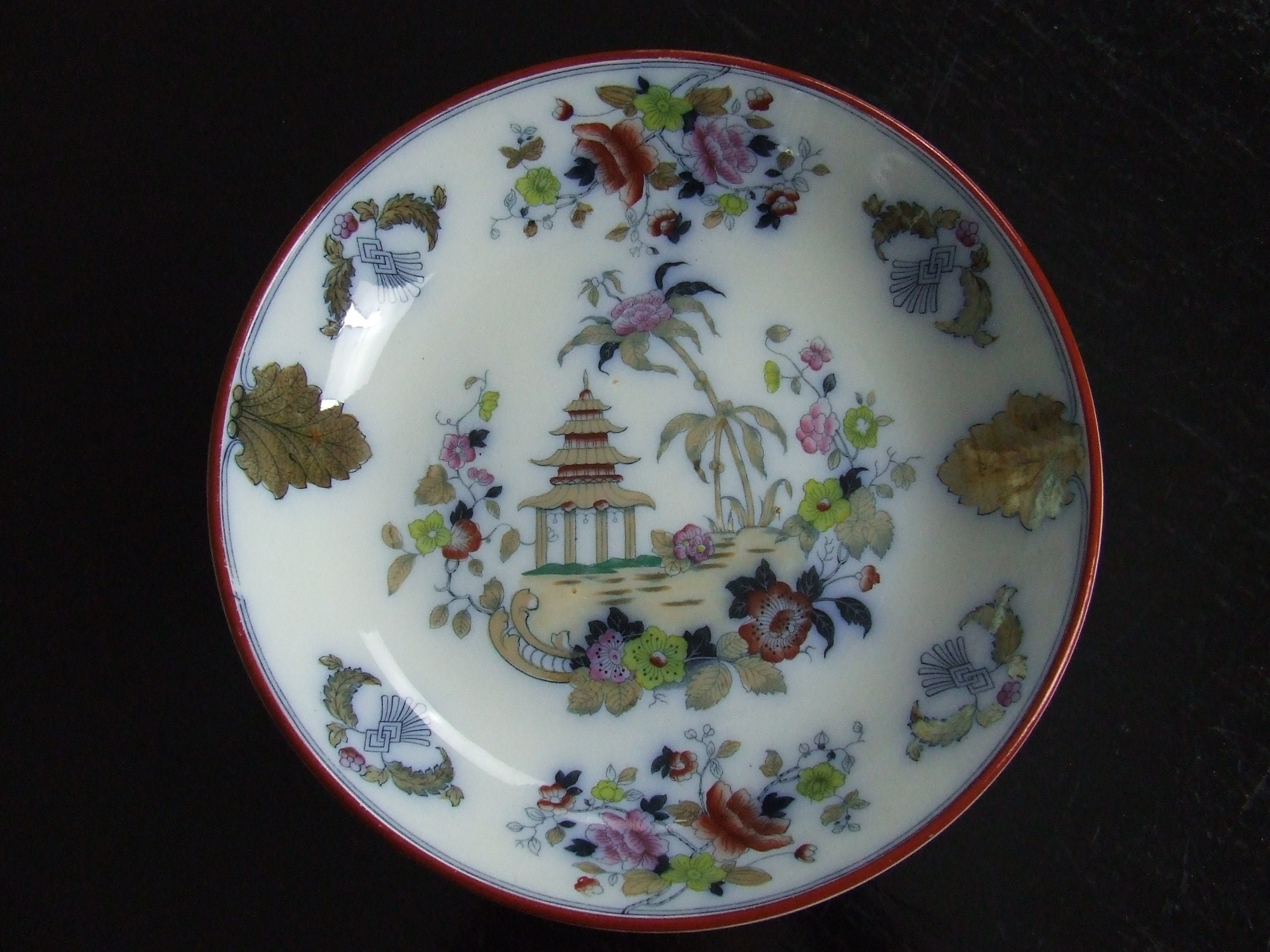
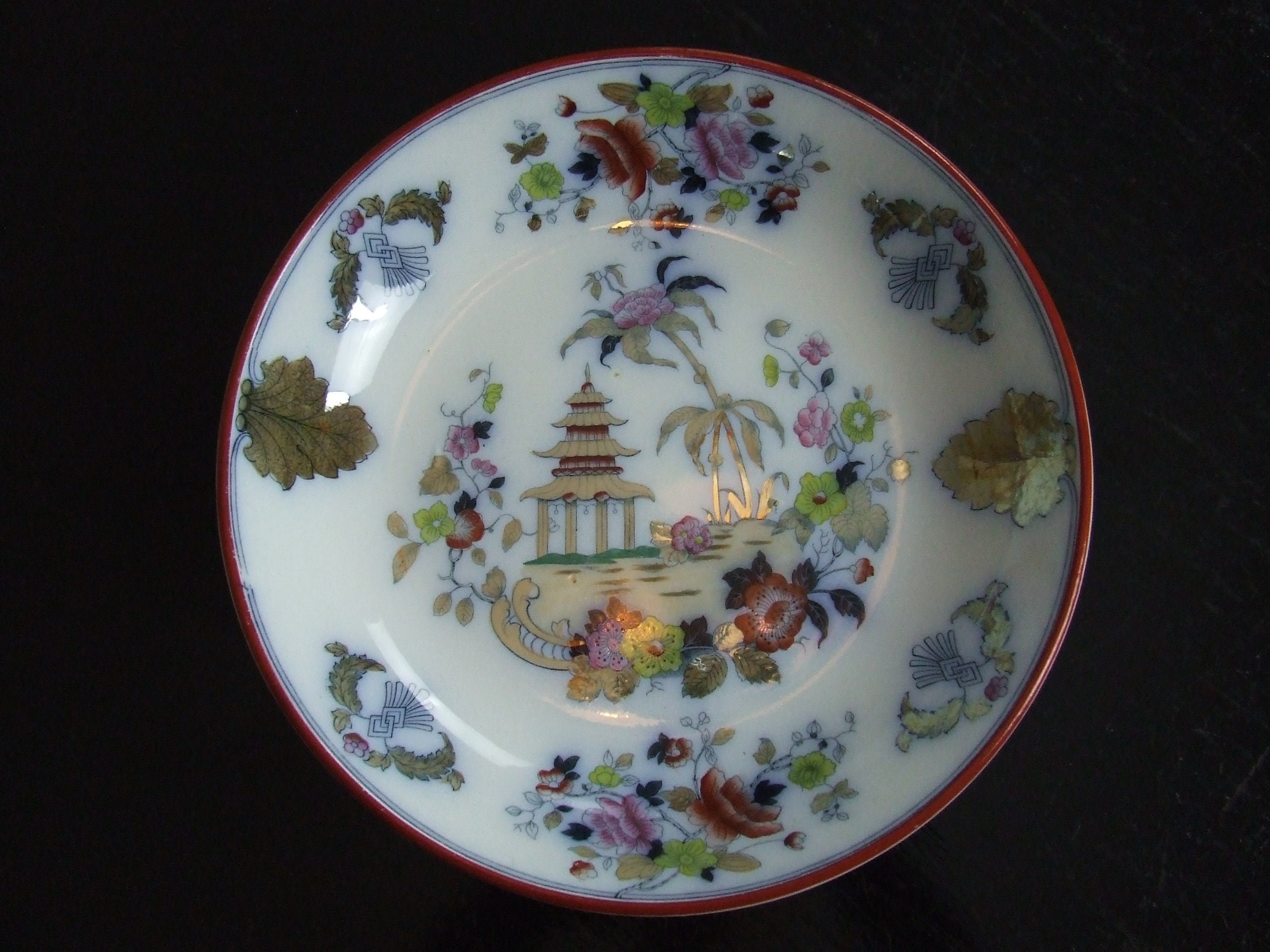
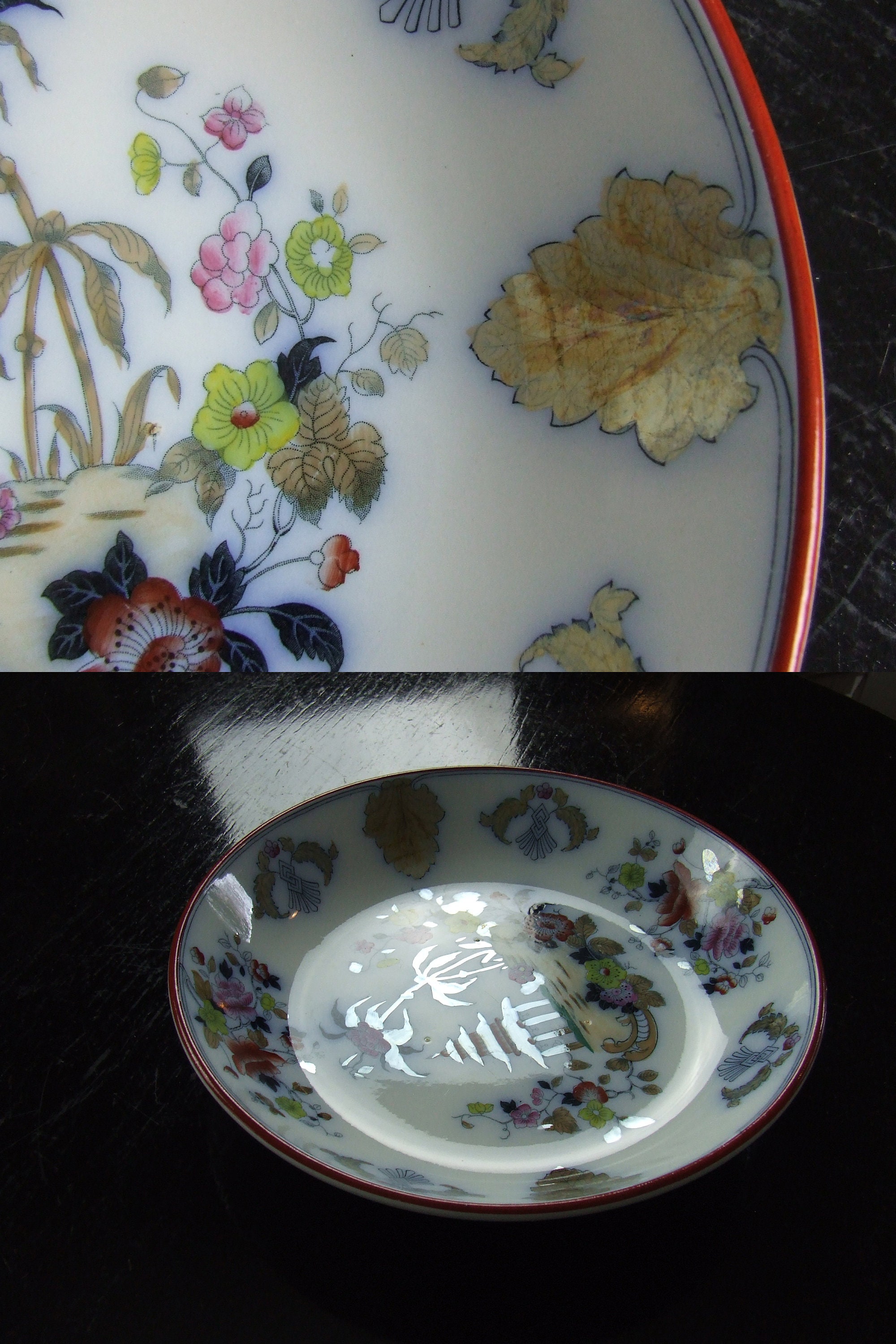
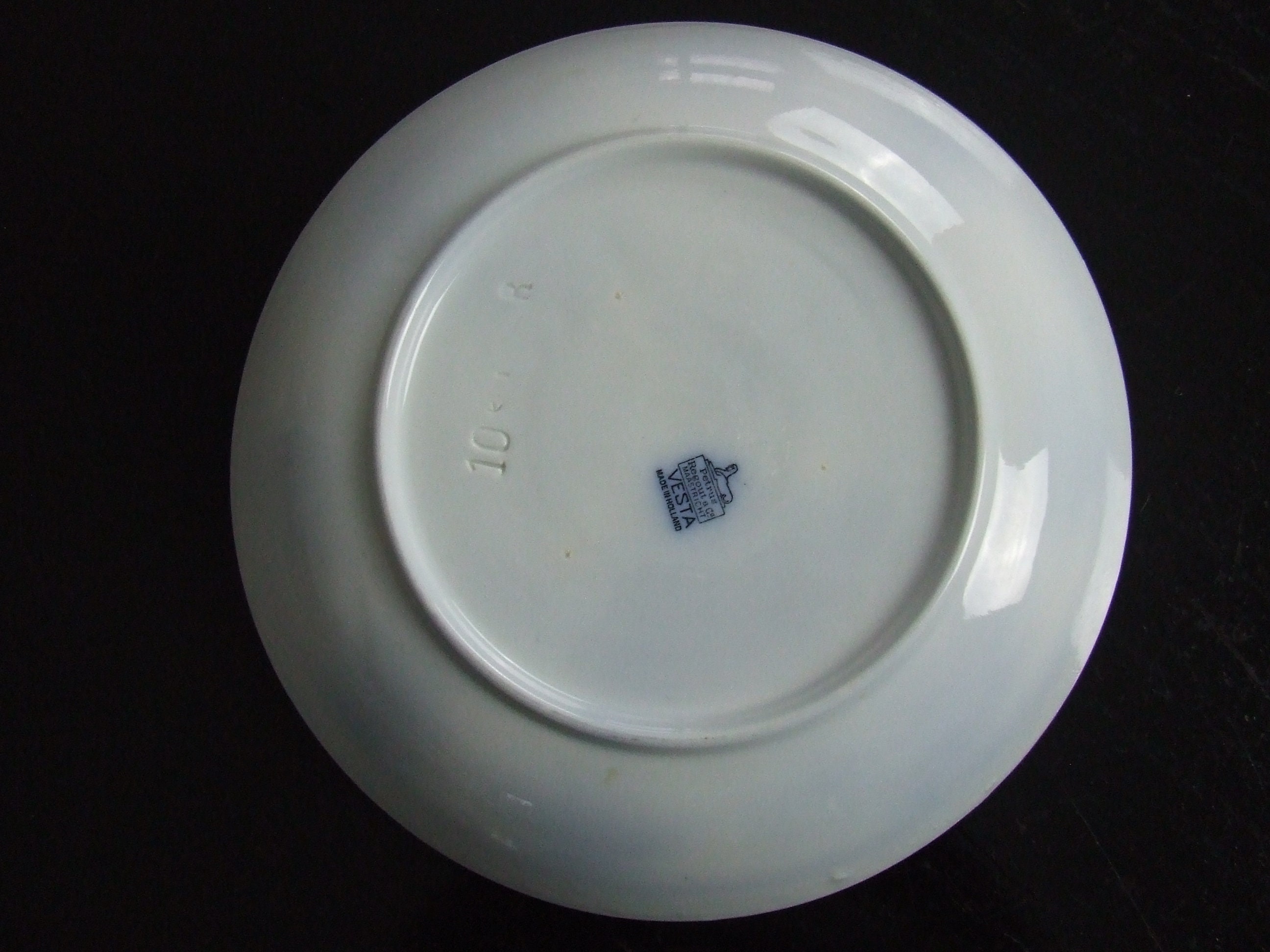

$82.80 $92.00
Large (28,7 x 5,5 cm) antique transferware dish with additional handpainting made between 1890 and 1914 by Petrus Regout in Maastricht, the Netherlands.
The dish is a shallow bowl which was probably meant to be used as a wash bowl together with a matching jug. The dish features a chinoiserie style decoration with in its centre a pagoda and a garland of flowers. The edge is decorated with leaf and flower ornaments. The outlines of the decoration were applied underglaze by transfer print, while the colours (yellow, violet / pink, russet (reddish brown) and golden brown) have been applied overglaze by hand. The golden-brown colour is a lustre glaze / paint, which is a paint that contains metallic oxides, which after firing creates a metallic effect. The effect is silvery or golden, depending on the angle of sight (see pictures). The edge of the dish is painted russet, also by hand overglaze.
The backside of the dish has a printed Petrus Regout & Co. Maastricht mark, which in this style was used between 1892 and 1930. It features the name of the decoration ("Vesta") and the classification "Made in Holland". Of the Vesta decoration it is known that it was produced between 1863 and 1930 by Petrus Regout. There are also several numbers, letters and symbols impressed in the clay: a large number 10, a large letter R and two smaller symbols, a stripe and an umbrella-like symbol. Of the umbrella symbol it is known that it was used on ceramics produced between 1890 and 1914. So all in all it can be concluded that this dish was made somewhere between 1890 and 1914.
A blue haze can be seen around the underglaze applied decorations, similar to flow blue transferware. This is interesting, because the underglaze outlines are printed in the colour black, not blue. Apparently there is some cobalt blue mixed in the black which diffuses into the surrounding ceramic. Several bluish spots can also be found on the backside of the dish.
Condition: excellent, there are no damages and there is very little wear to the glaze. Also the overglaze applied colours are in a very good condition, including the sensitive luster glaze. On both the front as the back side of the dish three tiny stilt marks can be found, which are small marks left by the stilts where the plate was resting upon while being fired. These marks are not defects, but normal artefacts of the way these dishes were produced. The occurrence of stilt marks on the front side of the dish is unusual, because this is normally only found on much older ceramics in the Netherlands.
A rare and beautiful example of coloured transferware from the beginning of the 20th century. In great condition, looks excellent under the correct lighting. Great on its own in a plate stand (the plate stand featured in the pictures will be provided with the dish), as a centrepiece or as a bowl on a table.
Made by: Petrus Regout & Co. (after 1899 also known as "De Sphinx")
Place of manufacture: Maastricht, the Netherlands
Year of manufacture: between 1890 and 1914
Method of decoration: transfer print applied by hand (underglaze), handpainted colours (overglaze)
Size: diameter 28,7 cm, depth 5,5 cm
Weight: 940 g
Additional pictures can be provided if required.
----------------------------------------------------------------------
About Petrus Regout & Co.:
This factory was based in Maastricht, in the southernmost point of the Netherlands. It produced from 1836 to 1958 decorative ceramics and dinnerware in a variety of styles. Most often the decoration was applied by transfer print: a method whereby a monochrome print on paper (from an engraved copper or steel plate) was transferred by pressing it onto the ceramic piece. This transfer process was done by hand. Although transfer printed items lack the vibrancy of handpainted items, the process does allow for the production of beautiful, detailed and decorative items, which would be very expensive or impossible to produce by hand painting. The blue and white Delftware produced by P. Regout and other Maastricht factories has a bit darker blue than the Delftware of other factories in the Netherlands.
In 1958 P. Regout merged with Société Céramique (also from Maastricht) to form Royal Sphinx, which continued to produce Delftware until 1969.
----------------------------------------------------------------------
This beautiful item will be carefully packed and send by tracked and insured mail.
If you buy multiple items from our shop in one purchase, we will try to combine the items into one parcel. Any excess shipping costs will be refunded.
If you are not satisfied with your purchase, you may contact us within 14 days from the delivery date to return the item. If the item is returned in its original condition, we will issue a refund for the total purchase price of the item (return shipping costs are however not covered).
Buyers are responsible for any tariffs, duties and fees that may apply. Decorative ceramics imported to the USA from the Netherlands (European Union) are subject to an import duty of 15% of the item value.
Shipping from The Netherlands
Processing time
1-2 business days
Customs and import taxes
Buyers are responsible for any customs and import taxes that may apply. I'm not responsible for delays due to customs.
Payment Options
Returns & Exchanges
I gladly accept returns
Just contact me within: 14 days of delivery
Ship items back to me within: 30 days of delivery
I don't accept exchanges or cancellations
But please contact me if you have any problems with your order.
Conditions of return
Buyers are responsible for return shipping costs. If the item is not returned in its original condition, the buyer is responsible for any loss in value.
Frequently Asked Questions
What are your shipping times?
We will send off your order within one or two working days. We use the standard parcel service of PostNL to ship our parcels. You can find their estimated delivery times per country here (shortened link to pdf download of PostNL): https://bit.ly/3ZHTMJ9. In the fourth column (parcels) you can find the delivery times of the standard service (in estimated business / working days). Please keep in mind that customs / import procedures in non-EU countries can sometimes add an extra week (or even two weeks) to the delivery times.
For shipments to the USA we use FedEx Economy delivery, as PostNL temporarily does not deliver to the USA due to changes in import duties. Estimated delivery time is four days after shipping, if all goes well at customs.
How do you pack your items, will my item arrive safely?
Broken ceramics is a thing we do not like! Not only is it a waste of time and money, but it also (often) means the end for a rare and unique item, which was treasured and cared for by their previous owners. So we really want to avoid any damages during shipping!
We have lots of experience of shipping ceramics, and we have seen what works and what does not work to protect ceramics during transit. If we ship multiple items in one package, each item is carefully wrapped and kept well seperated from the other items. We use large boxes, with plenty of buffer all around the items, so the packages can withstand a lot of abuse. All our packages should be able to cope with a 1,5 m drop without the items getting damaged.
Do you take care of the environment?
Yes we do. We re-use packaging materials as much as possible, which means we rarely need to buy new materials for our packaging. Only foam peanuts are sometimes bought by us, in which case we prefer to use green starch based peanuts which are fully biodegradable, non-toxic and water-soluble.
Each year, we calculate the greenhouse gas emissions in CO2-equivalents caused by our shipping. We multiply that amount by 200% and then offset it in certified CO2 compensation projects based on tree planting / reforestation in various parts of the world. So far, we have offset 35,5 tonnes of CO2 emissions in projects in Bolivia and Borneo (Indonesia). See https://treesforall.nl/en/projects/ for more information on the projects.
How should I take care of my Dutch ceramics?
First of all, don't let them fall! Always handle them in a mindful way and put them in spots where they cannot be accidentally bumped over when cleaning or vacuuming. Some people put some (clean) sand in vases to make them more stable.
Second, don't clean them too often! Underglaze painted Gouda and Delftware can be perfectly cleaned with water if necessary, but often just dusting them off or polishing them up a bit with a soft dry cloth is enough. Overglaze painted items should not be cleaned too often.
The colours of ceramics do not fade in sunlight, so you can put them in bright spots where they look good. But do avoid large temperature differences, which will cause increased crazing in many Delftware and also Gouda type pieces.